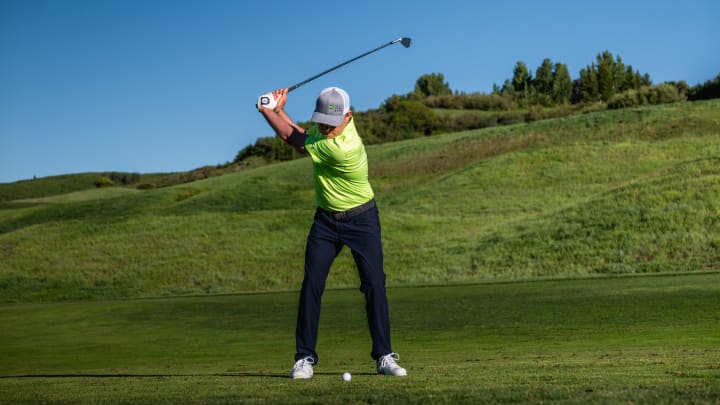The Importance of Multi-Directional Training for Golf

A lot of golfers think the best way to improve power and distance through exercise is to only perform exercises that directly mimic the golf swing (i.e. only rotational exercises)—and only in the direction of their swing (righties going right, lefties left). This is a costly mistake. Even though golf is a unidirectional movement, training in both directions is crucial.
A body that's symmetrical and balanced is the one that's most resilient to the wear and tear associated with the golf swing and also the most adept at generating rotational force. Performing movements (such as the golf swing) and exercises on only one side or in only one direction will create asymmetries and imbalances in the body over time.

These imbalances manifest in ways such as short, tight muscles on one side of the body, joint compression in specific areas, and overdeveloped muscles in other parts of the body—all of which cause joint damage and pain. Performing exercises in both directions and on both sides of the body will keep your body flexible and mobile. Both of which lead to a more powerful swing and help prevent injuries and relieve pain.
While it will likely feel uncomfortable at first, make sure to perform rotational exercises in both directions when you train, and to always work on shoulder, hip, and upper back mobility on both sides of your body. Below are some of GOLFFOREVER’s key rotational exercises that should be performed in both directions to achieve your goals.
Split-Squat Backhand
These imbalances manifest in ways such as short, tight muscles on one side of the body, joint compression in specific areas, and overdeveloped muscles in other parts of the body—all of which cause joint damage and pain. Performing exercises in both directions and on both sides of the body will keep your body flexible and mobile. Both of which lead to a more powerful swing and help prevent injuries and relieve pain.
While it will likely feel uncomfortable at first, make sure to perform rotational exercises in both directions when you train, and to always work on shoulder, hip, and upper back mobility on both sides of your body. Below are some of GOLFFOREVER’s key rotational exercises that should be performed in both directions to achieve your goals.
Split-Squat Backhand
Split-Squat Backhand is a great exercise to build rotational power and to build strength in the shoulder. Additionally, it works to groove movement patterns that will translate directly to your golf swing.
Standing Cable Circles
These imbalances manifest in ways such as short, tight muscles on one side of the body, joint compression in specific areas, and overdeveloped muscles in other parts of the body—all of which cause joint damage and pain. Performing exercises in both directions and on both sides of the body will keep your body flexible and mobile. Both of which lead to a more powerful swing and help prevent injuries and relieve pain.
While it will likely feel uncomfortable at first, make sure to perform rotational exercises in both directions when you train, and to always work on shoulder, hip, and upper back mobility on both sides of your body. Below are some of GOLFFOREVER’s key rotational exercises that should be performed in both directions to achieve your goals.
Split-Squat Backhand
Split-Squat Backhand is a great exercise to build rotational power and to build strength in the shoulder. Additionally, it works to groove movement patterns that will translate directly to your golf swing.
Standing Cable Circles
One of the best exercises to create core strength for rotational control to prevent damage to your back and joints. While this exercise may look incredibly simple, it is quite challenging. The core muscles are designed to stop movement, not initiate movement. And Standing Cable Circles is a natural and effective way to to activate—and strengthen—your core muscles.
Want to learn more? Visit GOLFFOREVER.COM to build flexibility, mobility, strength and more confidence in your game than ever before.
Check out more videos and articles on our Fitness & Wellness section.
All GOLFFOREVER content and exercises are presented with the expressed understanding that you should visit a doctor to determine the cause of any pain you may be feeling and in some rare cases that can include cancer, fractures, infection and more. It should also be understood that you are strongly advised to first receive clearance from a physician before following any exercises or advice presented on this site, and that Morning Read and its partner, GOLFFOREVER, are not liable for any injuries that may occur.
